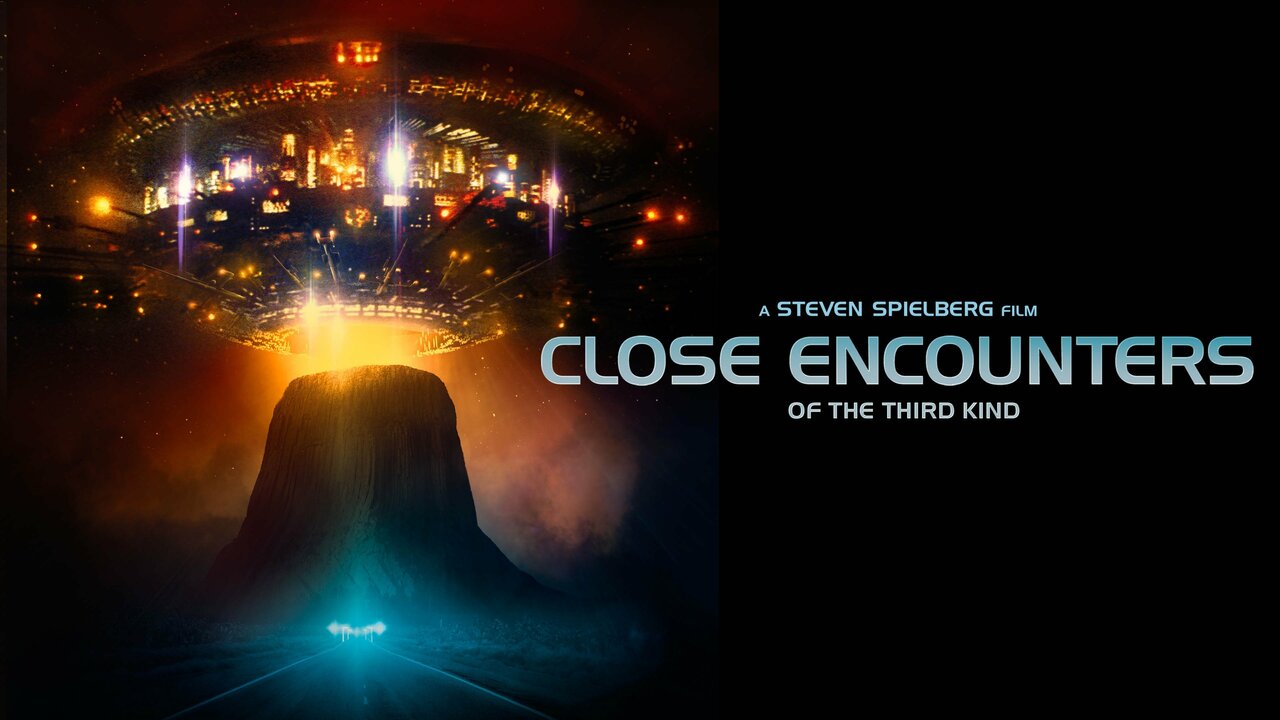
Close Encounters of the Third Kind is a classic science fiction film that has captivated audiences since its release in 1977. Directed and written by Steven Spielberg, this cinematic masterpiece takes viewers on a thrilling journey into the unknown. With its mesmerizing visuals, brilliant performances, and groundbreaking special effects, it quickly became a cultural phenomenon and remains a beloved film to this day.
In this article, we will delve into the fascinating world of Close Encounters of the Third Kind and uncover 46 intriguing facts about the movie. From behind-the-scenes tidbits to interesting trivia about the cast and crew, we will explore the various aspects that make this film a true gem in the sci-fi genre. So, buckle up and get ready to embark on a journey filled with extraterrestrial encounters, government conspiracies, and the quest to unlock the mysteries of the universe.
Key Takeaways:
- Close Encounters of the Third Kind” is a classic sci-fi film directed by Steven Spielberg in 1977, exploring themes of alien encounters, communication, and the impact on individuals. It features iconic performances, groundbreaking visual effects, and a universal message of imagination and cosmic connection.
- The movie’s legacy continues to captivate audiences, inspiring future science fiction films and emphasizing the power of imagination. It left room for interpretation, showcased authentic family dynamics, and celebrated the wonder of the unknown. It’s a timeless reminder of the limitless possibilities of the universe.
Close Encounters of the Third Kind was directed by Steven Spielberg.
Steven Spielberg, a legendary filmmaker, helmed the iconic sci-fi film Close Encounters of the Third Kind.
The movie was released in 1977.
Close Encounters of the Third Kind made its theatrical debut in 1977, captivating audiences with its groundbreaking special effects and extraordinary storyline.
The film stars Richard Dreyfuss.
Richard Dreyfuss portrayed the lead role of Roy Neary, a blue-collar worker whose life is forever changed after an encounter with an unidentified flying object.
It was nominated for eight Academy Awards.
Close Encounters of the Third Kind received critical acclaim and was nominated for several Academy Awards, including Best Director and Best Original Screenplay.
The iconic five-tone musical sequence became an instant classic.
The memorable five-tone musical sequence played a significant role in the film and became one of the most recognizable elements of Close Encounters of the Third Kind.
The movie explores themes of extraterrestrial contact and communication.
Close Encounters of the Third Kind delves into the intriguing concepts of alien encounters, interstellar communication, and the mysteries of the universe.
Spielberg was inspired by his own childhood experiences.
Spielberg drew inspiration from his childhood fascination with UFOs and his own personal encounters, which influenced the creation of Close Encounters of the Third Kind.
John Williams composed the film’s iconic score.
Renowned composer John Williams provided the mesmerizing musical score for Close Encounters of the Third Kind, adding to the film’s emotional depth and impact.
The movie features groundbreaking visual effects.
Close Encounters of the Third Kind revolutionized visual effects in the industry, creating awe-inspiring scenes of alien spacecraft and breathtaking encounters.
The film was a box office success.
Close Encounters of the Third Kind was a commercial success, grossing over $337 million worldwide and solidifying its place in cinema history.
Filming took place in various locations.
The movie was filmed in multiple locations, including Wyoming, Alabama, and India, to capture the diverse settings and atmosphere of the story.
The title refers to different types of alien encounters.
The title Close Encounters of the Third Kind refers to a classification system that categorizes different levels of interactions between humans and extraterrestrial beings.
The film explores the impact of encounters on individuals.
Close Encounters of the Third Kind examines the profound effect that alien encounters have on individuals, exploring themes of obsession, discovery, and the search for truth.
Several versions of the film were released.
Close Encounters of the Third Kind had multiple versions released, including a special edition and a director’s cut, which provided additional scenes and expanded the narrative.
It is considered one of Spielberg’s most iconic films.
Close Encounters of the Third Kind is widely regarded as one of Spielberg’s greatest achievements, showcasing his mastery of storytelling and his ability to captivate audiences.
The movie influenced future science fiction films.
Close Encounters of the Third Kind had a significant impact on the science fiction genre, inspiring filmmakers and influencing the portrayal of extraterrestrial life in subsequent films.
It was praised for its realistic depiction of civilian reactions to alien encounters.
Close Encounters of the Third Kind received acclaim for its authentic portrayal of how ordinary people might react to extraordinary events, adding a sense of relatability to the story.
The film’s success led to the creation of a UFO research group.
Following the release of Close Encounters of the Third Kind, the Mutual UFO Network (MUFON) was formed, dedicated to investigating UFO sightings and encounters.
The script went through several revisions.
Before finalizing the screenplay, the script for Close Encounters of the Third Kind underwent multiple revisions, ensuring a cohesive and engaging story.
The film emphasizes the universal language of music.
Close Encounters of the Third Kind highlights the idea that music is a universal language that can bridge the gap between different species and civilizations.
The mother ship was inspired by an oil refinery.
The design of the massive mother ship in Close Encounters of the Third Kind was inspired by the steel structures of an oil refinery in India.
The movie explores the concept of suppressed memories.
Close Encounters of the Third Kind delves into the theme of repressed memories, as characters gradually recall and make sense of their encounters with extraterrestrial beings.
Spielberg initially wanted to keep the appearance of aliens hidden.
Originally, Spielberg intended to keep the aliens in Close Encounters of the Third Kind hidden from view, allowing the audience to imagine their own interpretations. However, he later decided to reveal them.
The film employed groundbreaking sound design techniques.
Close Encounters of the Third Kind utilized innovative sound design, creating atmospheric and immersive auditory experiences that enhanced the storytelling.
It features iconic performances from the cast.
The cast of Close Encounters of the Third Kind, including Richard Dreyfuss, Teri Garr, and Melinda Dillon, delivered exceptional performances that added depth to their characters and the overall narrative.
Spielberg wanted to make a more optimistic alien movie.
After the dark themes of his previous film Jaws, Spielberg aimed to create a more optimistic and hopeful portrayal of extraterrestrial beings in Close Encounters of the Third Kind.
The film provides an intriguing portrayal of government involvement.
Close Encounters of the Third Kind explores the complicated relationship between the government and civilians when it comes to dealing with alien encounters, highlighting issues of secrecy and control.
It incorporates elements of mystery and suspense.
Close Encounters of the Third Kind keeps audiences on the edge of their seats with its expertly crafted moments of suspense and mystery, building anticipation throughout the film.
The movie has a dedicated fan following.
Close Encounters of the Third Kind has garnered a strong and loyal fan base who appreciate its unique blend of science fiction, drama, and awe-inspiring visuals.
It explores the idea of following one’s instincts.
Close Encounters of the Third Kind encourages viewers to trust their intuition and follow their instincts, even when faced with the unknown or seemingly irrational.
The film’s iconic line is “This means something.”
The memorable line “This means something” spoken by Roy Neary became synonymous with the film and has been referenced in pop culture ever since.
Close Encounters of the Third Kind pioneered the use of hand signals in sci-fi.
The film introduced the concept of using hand signals as a means of communication with extraterrestrial beings, a technique that has been replicated in subsequent science fiction movies.
It explores the impact of belief on personal relationships.
Close Encounters of the Third Kind explores how personal beliefs, particularly in the existence of extraterrestrial life, can strain relationships and lead to personal transformations.
The film underwent a meticulous restoration process.
In 2017, Close Encounters of the Third Kind underwent a meticulous restoration process to celebrate its 40th anniversary, ensuring that future generations can experience the film in its original glory.
It utilizes subtle visual storytelling.
Close Encounters of the Third Kind incorporates subtle visual cues and symbolism to convey emotions and advance the narrative, adding depth to the storytelling.
The movie’s production faced numerous challenges.
During the production of Close Encounters of the Third Kind, the crew encountered various challenges, including unpredictable weather conditions and technical difficulties with the special effects.
It explores the theme of obsession.
Close Encounters of the Third Kind delves into the theme of obsession, portraying how Roy Neary’s obsession with understanding and encountering extraterrestrial life consumes his life.
The film’s closing shot is iconic.
The closing shot of Close Encounters of the Third Kind, showing Roy Neary boarding the alien spacecraft, has become an iconic image that perfectly encapsulates the film’s themes and emotional journey.
It features stunning cinematography.
The cinematography in Close Encounters of the Third Kind captures the vastness of space and the intricacies of human emotions, creating visually stunning sequences throughout the film.
The movie explores the idea of a cosmic connection.
Close Encounters of the Third Kind delves into the concept of a cosmic connection between humans and extraterrestrial beings, suggesting a shared universal bond that transcends physical boundaries.
The film’s release coincided with the Star Wars frenzy.
Close Encounters of the Third Kind was released just months after the immense success of Star Wars, contributing to the overall excitement and fascination with science fiction during that time.
It received praise for its authentic portrayal of family dynamics.
Close Encounters of the Third Kind incorporates relatable family dynamics, showcasing the impact that Roy Neary’s obsession has on his relationship with his wife and children.
The movie showcases the wonder of the unknown.
Close Encounters of the Third Kind embraces the sense of wonder and awe that comes with exploring the unknown and encountering something beyond our understanding.
It left room for interpretation.
Close Encounters of the Third Kind intentionally leaves room for interpretation, allowing audiences to formulate their own theories and conclusions about the nature of the encounters.
The film’s legacy still holds strong today.
Decades after its release, Close Encounters of the Third Kind continues to captivate audiences and remains a significant milestone in the realm of science fiction cinema.
It serves as a reminder of the power of imagination.
Close Encounters of the Third Kind serves as a timeless reminder of the power of imagination and the limitless possibilities of the universe, fueling our fascination with the unknown and extraterrestrial life.
Conclusion
Close Encounters of the Third Kind is a groundbreaking film that captivated audiences with its unique portrayal of extraterrestrial contact. With its impressive visuals, thought-provoking storyline, and memorable characters, this movie has solidified its place in cinematic history. Whether you’re a fan of science fiction or simply enjoy a well-crafted story, Close Encounters of the Third Kind is a must-watch film that continues to entertain and inspire audiences to this day.
FAQs
1. Who directed Close Encounters of the Third Kind?
Close Encounters of the Third Kind was directed by Steven Spielberg.
2. When was Close Encounters of the Third Kind released?
The film was released on November 16, 1977.
3. What is the significance of the movie’s title?
The title refers to the classification system for encounters with alien beings, with the third kind denoting direct contact between humans and extraterrestrial life.
4. Who starred in Close Encounters of the Third Kind?
The film starred Richard Dreyfuss, Francois Truffaut, and Teri Garr.
5. Is Close Encounters of the Third Kind based on a true story?
No, the movie is purely fictional and not based on any specific real-life events.
6. What awards did the film receive?
Close Encounters of the Third Kind received several Academy Award nominations and won for Best Cinematography.
7. Does the film have a director’s cut version?
Yes, there is a director’s cut version of Close Encounters of the Third Kind, which was released in 1998.
8. What is the famous musical theme associated with the movie?
John Williams composed the iconic five-note musical theme that is often associated with Close Encounters of the Third Kind.
If you're fascinated by the mysteries of UFOs, don't miss our article on the Utah UFO Festival. For fans of classic films, check out our piece on "The Thin Man Goes Home." And if you're curious about the magic behind the movies, read our article on the unbelievable facts about special effects makeup artists. Whether you're a sci-fi enthusiast, a cinephile, or simply love learning about the entertainment industry's hidden secrets, we've got plenty more intriguing articles for you to explore.
Was this page helpful?
Our commitment to delivering trustworthy and engaging content is at the heart of what we do. Each fact on our site is contributed by real users like you, bringing a wealth of diverse insights and information. To ensure the highest standards of accuracy and reliability, our dedicated editors meticulously review each submission. This process guarantees that the facts we share are not only fascinating but also credible. Trust in our commitment to quality and authenticity as you explore and learn with us.


